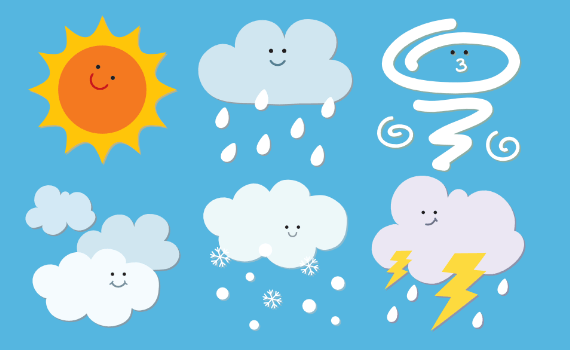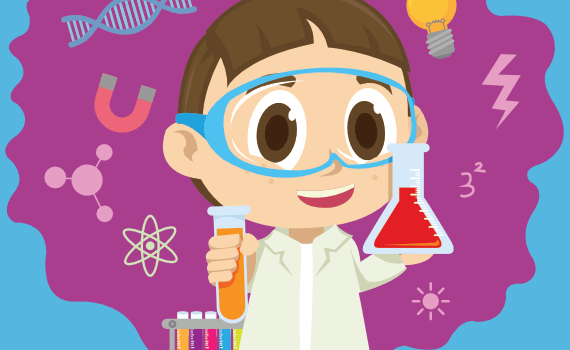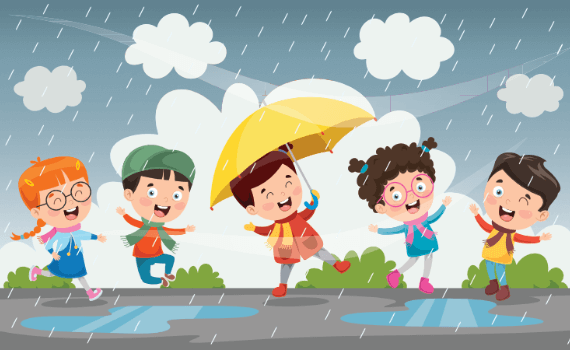
Weather

Natural Disasters

Experiments

Kid's Zone
Drought
- Drought Questions
- Types of Drought
- Drought Definitions
- Drought Severity Classification
- Drought Activities
What are the different types of drought?
There are four basic approaches to measuring drought: meteorological, hydrological, agricultural, and socioeconomic. The first three approaches deal with ways to measure drought as a physical phenomenon. The last deals with drought in terms of supply and demand, tracking the effects of water shortfall as it ripples through socioeconomic systems.
Meteorological drought is defined usually on the basis of the degree of dryness (in comparison to some “normal” or average amount) and the duration of the dry period. Definitions of meteorological drought must be considered as region specific since the atmospheric conditions that result in deficiencies of precipitation are highly variable from region to region. For example, some definitions of meteorological drought identify periods of drought on the basis of the number of days with precipitation less than some specified threshold. This measure is only appropriate for regions characterized by a year-round precipitation regime such as a tropical rainforest, humid subtropical climate, or humid mid-latitude climate.
Agricultural drought links various characteristics of meteorological (or hydrological) drought to agricultural impacts, focusing on precipitation shortages, differences between actual and potential evapotranspiration, soil water deficits, reduced groundwater or reservoir levels, and so forth. Plant water demand depends on prevailing weather conditions, biological characteristics of the specific plant, its stage of growth, and the physical and biological properties of the soil. A good definition of agricultural drought should be able to account for the variable susceptibility of crops during different stages of crop development, from emergence to maturity.
Hydrological drought is associated with the effects of periods of precipitation (including snowfall) shortfalls on surface or subsurface water supply (i.e., streamflow, reservoir and lake levels, groundwater). The frequency and severity of hydrological drought is often defined on a watershed or river basin scale. Although all droughts originate with a deficiency of precipitation, hydrologists are more concerned with how this deficiency plays out through the hydrologic system. Hydrological droughts are usually out of phase with or lag the occurrence of meteorological and agricultural droughts. It takes longer for precipitation deficiencies to show up in components of the hydrological system such as soil moisture, streamflow, and groundwater and reservoir levels. As a result, these impacts are out of phase with impacts in other economic sectors.
Socioeconomic definitions of drought associate the supply and demand of some economic good with elements of meteorological, hydrological, and agricultural drought. It differs from the aforementioned types of drought because its occurrence depends on the time and space processes of supply and demand to identify or classify droughts. The supply of many economic goods, such as water, forage, food grains, fish, and hydroelectric power, depends on weather. Because of the natural variability of climate, water supply is ample in some years but unable to meet human and environmental needs in other years. Socioeconomic drought occurs when the demand for an economic good exceeds supply as a result of a weather-related shortfall in water supply.
Aquifer – an area that contains large amounts of water under the surface of the earth.
Climate – day-to-day weather over a longer period of time. Climatology is the study of climate.
Climograph – a graph that shows monthly average temperature and precipitation for some location.
Dam – a structure built across a river to hold back water for a variety of reasons, including protecting areas from floods, storing water, and generating power.
Desalination – the process of removing salts and other minerals from seawater so that it can be used for drinking water.
Drought – less rainfall than is expected over an extended period of time, usually several months or longer. Or, more formally, it is a deficiency of rainfall over a period of time, resulting in a water shortage for some activity, group, or environmental sector.
Drought Index – a numerical scale that scientists use to describe the severity of a drought. Scientists take many kinds of data (like streamflow, rainfall, temperature, and snowpack) and “blend” it into a single number, called a drought index value, to make it easier to understand the drought conditions of a particular area. Drought indices are one type of drought indicator.
Drought Indicator – a way to look at one or more variables, such as precipitation, to describe available water in soil or hydrologic systems. It may be a record of a single measurement, such as rainfall at a particular rain gauge. It may also be a complex index. Drought indices (indexes) are a subset of drought indicators.
Dust Bowl – an area of the U.S. Plains that included parts of Kansas, Colorado, Oklahoma, Texas, and New Mexico. The term was coined in the 1930s, when dry weather and high winds caused many dust storms throughout the United States, but particularly in this area.
Erosion – a process that wears the earth’s surface away, causing soil to move from one place to another. It’s a natural process, but human activities can make it worse.
Groundwater – water that is found underground in spaces in soil, sand, or rocks.
Hydroelectricity – electricity created by channeling water through turbines in power stations located below dams.
Irrigation – an agricultural practice that involves providing water to crops through pipes, ditches, or streams.
Mitigation – actions that we can take before, or at the beginning of, drought to help reduce the impacts of drought. Mitigation includes actions as diverse as drought planning, implementing land use practices that increase the organic content and water-holding capacity of soil, and designing agricultural policy that doesn’t encourage short-term economic gains at the expense of long-term productive capacity. The Intergovernmental Panel on Climate Change uses mitigation to mean reducing emissions of greenhouse gasses.
Reservoirs – water that’s collected and stored in natural or manmade lakes.
Submarginal Farmland – lands with nutrient-poor soils and/or soils that have been damaged by poor cultivation practices.
Water Banking – a water management strategy that temporarily transfers water from those who are willing to lease it to those who are willing to pay to use it.
Water Recycling – reusing treated wastewater for purposes like agricultural and landscape irrigation. It’s also referred to as water reclamation or water reuse.
Xeriscaping – a type of landscaping around homes and businesses that uses a limited amount of water.
Click on the chart to make larger!

Click Here to see the current U.S. Drought Monitor!
Lesson Plan: Here is a lesson plan on water conservation.
Lesson Plan: Here is a lesson plan on how drought affect agriculture.
Science Fair Project Ideas: Here is a complete list of science fair project ideas. Discover the science behind the weather that impacts us every day.








